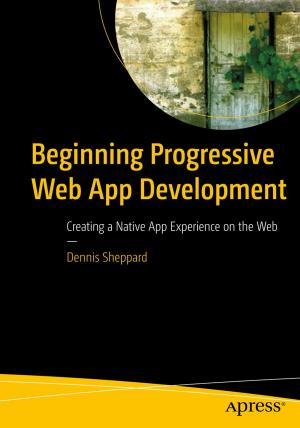Physically Based Shader Development for Unity 2017
Develop Custom Lighting Systems
Nonfiction, Computers, Entertainment & Games, Game Programming - Graphics, General Computing, Programming| Author: | Claudia Doppioslash | ISBN: | 9781484233092 |
| Publisher: | Apress | Publication: | December 6, 2017 |
| Imprint: | Apress | Language: | English |
| Author: | Claudia Doppioslash |
| ISBN: | 9781484233092 |
| Publisher: | Apress |
| Publication: | December 6, 2017 |
| Imprint: | Apress |
| Language: | English |
Benefit from the latest rendering tech developments, currently covered only in papers and talks from Siggraph, in a way any developer or technical artist using Unity can take advantage of. This book starts by introducing how shader programming works in general, the common principles of different platforms (OpenGL, Vulkan, and DirectX), and the shading languages Unity uses: Cg, GLSL, and ShaderLab.
Physically Based Shader Development for Unity 2017 discusses artistic choices, presenting various techniques (such as translucency and subsurface scattering) and BRDFs (Oren-Nayar, Cook-Torrance, and Ashikhmin-Shirley), and what they can be used for. Finally you’ll cover the importance of optimizing your code by developing approximations, which achieve similar end results, but are computationally cheaper.
By the end of your journey you’ll be able to develop the look of your game or Unity-rendered animated short so that it looks both unique and impressively realistic, thanks to your own custom lighting system.
**What You Will Learn **
-
Master shader programming
-
Gain all you need to know about physically based shading
-
Take almost full control of the shader subsystem
-
Discover what you can achieve with that control
-
Implement a custom physically based lighting system and examine the logic behind every choice
**Who This Book Is For **
Most game developers (both indie and AA) that use Unity and technical artists who are responsible for the final look of a game.
Benefit from the latest rendering tech developments, currently covered only in papers and talks from Siggraph, in a way any developer or technical artist using Unity can take advantage of. This book starts by introducing how shader programming works in general, the common principles of different platforms (OpenGL, Vulkan, and DirectX), and the shading languages Unity uses: Cg, GLSL, and ShaderLab.
Physically Based Shader Development for Unity 2017 discusses artistic choices, presenting various techniques (such as translucency and subsurface scattering) and BRDFs (Oren-Nayar, Cook-Torrance, and Ashikhmin-Shirley), and what they can be used for. Finally you’ll cover the importance of optimizing your code by developing approximations, which achieve similar end results, but are computationally cheaper.
By the end of your journey you’ll be able to develop the look of your game or Unity-rendered animated short so that it looks both unique and impressively realistic, thanks to your own custom lighting system.
**What You Will Learn **
-
Master shader programming
-
Gain all you need to know about physically based shading
-
Take almost full control of the shader subsystem
-
Discover what you can achieve with that control
-
Implement a custom physically based lighting system and examine the logic behind every choice
**Who This Book Is For **
Most game developers (both indie and AA) that use Unity and technical artists who are responsible for the final look of a game.















